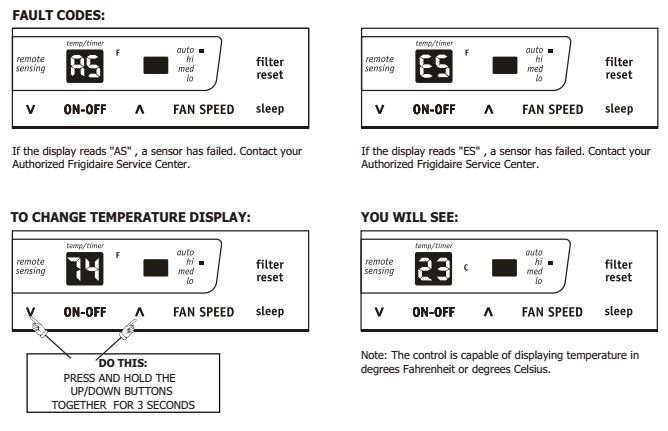
Frigidaire air conditioners are known for their reliability and efficiency, but like all machines, they can sometimes encounter hiccups. The “E1” error code is one such hiccup, indicating that something isn’t quite right. But what does it really mean, and why does it pop up in the first place? Let’s dive into the world of air conditioner diagnostics and get a clear understanding of this error code and how you can resolve it.
Understanding the E1 Error Code
The “E1” error code on your Frigidaire air conditioner is akin to a little red flag. It’s the unit’s way of saying, “Hey, I need some attention here!” Specifically, this code usually points to a problem with the unit’s temperature sensor or sometimes an issue with the electronic control. Think of the temperature sensor like the air conditioner’s thermometer. If it’s malfunctioning, the AC can’t gauge the room’s temperature properly, just like when a faulty thermostat prevents you from knowing your fever accurately.
When this sensor goes haywire, the air conditioner struggles to maintain the desired room temperature, which can cause it to work too hard or not hard enough. The electronic control board, on the other hand, is like the brains of the operation. If it’s not working correctly, neither is your AC. The code “E1” alerts you to check these components.
Often, the sensor could be detached or blocked, making it difficult for the AC to sense the correct temperature. In more rare cases, the control board itself might need a reset. Regardless, this error is telling you there’s a communication breakdown somewhere in your system.
How to Troubleshoot the E1 Code
Let’s walk through this troubleshooting process together. When you see the “E1” error code, the first thing to try is a simple reset. Unplug the air conditioner from the power source, wait for a couple of minutes, and then plug it back in. This can often clear the error, much like rebooting a computer fixes a temporary glitch.
If a reset doesn’t do the trick, it’s time to inspect the temperature sensor. Usually located behind the front panel or near the evaporator coils, ensure it’s securely connected and not obstructed by dust or debris. Interestingly, cleaning this component often resolves the issue, as dirt buildup can insulate the sensor, making it read temperatures incorrectly.
In cases where the error persists, the problem might be more complex. If you’re handy, you can check the wiring connections between the sensor and the control board, ensuring nothing looks damaged or loose. However, remember, safety first! If you’re not confident in what you’re doing or the error remains elusive, it might be best to call in a professional technician. They have the tools and expertise to diagnose deeper issues.
Preventative Measures for Future E1 Errors
Wouldn’t it be great if we could prevent these errors from happening? While no machine is completely immune to issues, there are steps you can take to reduce the chances of encountering the “E1” code again. Regular maintenance is key. Just like a car needs periodic tune-ups, your AC benefits from routine check-ups to keep it running smoothly.
Start by cleaning or replacing filters regularly. This improves air flow and prevents the unit from overworking. Also, inspecting and dusting the temperature sensor and coils can prevent obstructions or misreadings. It’s also wise to keep the area around your AC unit clear and ensure there’s plenty of space for air to circulate.
If you’re someone who likes to be proactive, consider investing in a regular service contract with a qualified HVAC technician. They can perform more thorough checks and maintenance, potentially catching issues before they become serious. Think of it as a preventative health check-up for your AC.
Dealing with an error code like “E1” can initially feel daunting, but understanding what it means is half the battle. With a bit of troubleshooting and regular maintenance, you can often resolve these issues on your own and keep your Frigidaire air conditioner running smoothly. Remember, if at any point you feel uncertain, professional help is just a phone call away.
So next time your air conditioner throws an “E1” your way, you’ll know exactly what to do. Keep cool and carry on, because now you’ve got the knowledge to tackle this problem head-on!